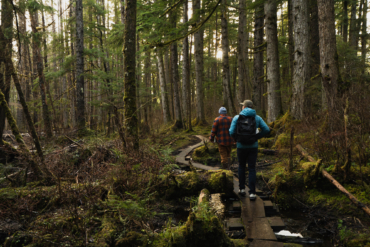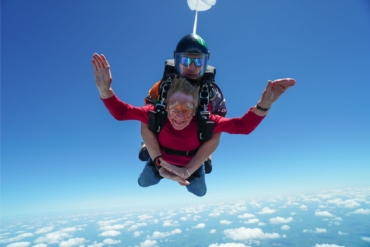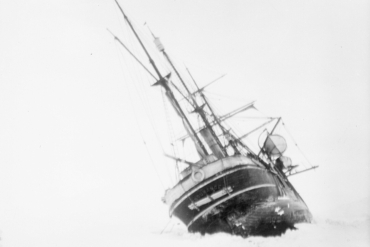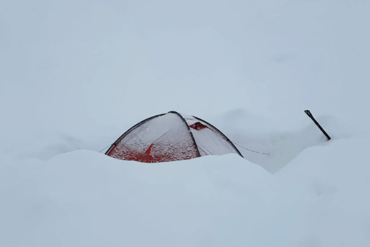Q&A WITH THE GEAR JUNKIE
By Bill Katovsky
(This interview appeared originally on www.RailRiders.com.)
Bill Katovsky: Last year was a busy one for you. Which was more difficult, and why? The weeklong Primal Quest adventure race in Utah or biking 135 miles in snow and sub-zero temperatures in northern Minnesota during the Arrowhead 135 race?
Stephen Regenold: Primal Quest, hands down. The Arrowhead Race got off to a tough start—minus-19 degrees F at the start line—but once my tires got rolling that event went mostly smooth. Primal, on the other hand, was a weeklong bought of absolute physical, mental and existential realignment, punctuated by thirst, hunger, fear, exhaustion, emotional breakdown, and enlightenment. On about the fourth night my head began to feel like it was floating a foot off my shoulders. Colors looked more vivid. We slept just here and there, an hour a night some days. The whole thing was life changing, and it was totally eye-opening to the potential of what the human body can do.

BK: What’s the scariest thing that has ever happened to you on one of your adventures?
SR: I skied out an avalanche in the Jackson Hole backcountry once, riding the tumbling fluff like a wave. My heart was racing for sure. I’ve taken 40- or 50-foot leader falls on traditional rock climbs, a memorable one on Devils Tower. The scariest though was when one of my skiing buddies rag-dolled over talus on a huge chute outside Bozeman—“The Great Northern Couloir”—about 10 years ago. He missed a hop-turn on the steep slope and shot off into an adjacent gully, flipping over rocks. It was horrible. Saw his ski boots flying up over his head, and then he came to a stop on the edge of a cliff. Amazingly, he only dislocated an elbow and had a minor concussion. (He was wearing a climbing helmet, thank God.) I slung his bum arm up with an extra pair of pants from my pack, securing it close to his body, and helped him side-slip the 2,000 vertical down to the forest below. Then, we got lost in the rain hiking out. . .
BK: What are your five favorite camping or hiking places in the U.S. or Canada? And why?
SR: 1. Minnesota’s North Shore—Lake Superior views, quiet old mossy forests. My homeland!
2. Big Sur, Calif.—Giant redwoods, rushing rivers, waterfalls, fog, ferns, ocean. . .
3. Red Rock Canyon, Nevada—Otherworldly sandstone valleys and mountains 25 minutes from the Vegas Strip
4. Black Hills, South Dakota—Granite spires, deep piney forests
5. Central Colorado—This country’s version of the Swiss Alps, especially in springtime
BK: When you are testing gear for manufacturers, are you part outdoor lab rat, wide-eyed enthusiast, or dyed-in-the-wool skeptic?
SR: I’m a journalist first, an outdoor lab rat second, so I guess the “dyed-in-the-wool skeptic” fits best. I see so much gear every year that not a lot wows me anymore. This objective view lets me write about the gear more honestly.
BK: Ever test things in the outdoors and have them really fail and be, well, S.O.L?
SR: Never S.O.L., ‘cause I won’t rely on something I don’t know and trust. My worst incident—and this is an episode that could have killed me—was about 10 years ago when I was testing an emergency rappelling system for Vertical Jones magazine, which was a climbing magazine I started up while in college. The rappelling product, which included a fanny pack stuffed with 4mm cord and a special rappel device, was made for emergency situations when you needed to abseil a cliff but did not want to have to bring along a regular climbing rope. Anyway, I didn’t trust the setup at all, and so when testing it on a 100-foot sheer cliff I had a climbing partner back me up with another rope. I rappelled, and the little cord did fine, but while wrapping it up at the bottom I noticed that the cord was sliced almost all the way through near one end. Very bad. Not sure if it came like that from the company or if something on the cliff face cut it, but I was glad I had that backup line as my life hung literally by a thread.

BK: Let’s take water. What is your opinion on all the different ways to treat waterborne parasites and bacteria. What’s your ultimate recommendation?
SR: I use iodine and other chemical tablets. Have never had a parasite or an incident, though most of the places I go are pretty pristine. On the Primal Quest, however, we had to filter the silt out of river water with one of my teammates’ (Roy Wallack’s) underwear!
BK: Does your house look like a Big 5 or Sports Chalet store with all the gear you test? What do you do with all the stuff after you’re done reviewing?
SR: More like a FedEx depot, with new gear coming in all the time, and the tested stuff being shipped back to manufacturers.
BK: What recommendations do you have for novice backpackers? How much new gear do you suggest they invest in. What are some essentials? (Feel free to mention brand names and specific products).
SR: This question is so broad, but general suggestions would be to go fast and light, bank on speed in the backwoods over comfort. Buy products that are simple and high quality, like a $10 straight-blade Mora knife instead of an $80 multi-tool. I bring an amazingly little amount of gear on my backpacking adventures, just the bare minimum for food, drink, warmth, and protection from the elements.
BK: What do you think of the gear and equipment used by Shackleton’s party in the early 1900s in the Antarctica? How would it fare today?
SR: It’s insane what they did, but I think in those situations it’s more about a will to survive than anything. They would have been more comfortable in breathable merino wool base layers and eVent shells, but I think in the end it was strictly the primal force in those kind of archetypal adventurers that let them live. What modern gear has done is even the playing field. Now average athletes can climb Mount Rainier or dogsled through the Arctic, or whatever. Those kind of expeditions used to be a major feats, as the gear was so heavy and inefficient.

BK: Can you build a fire from scratch in the outdoors—without matches?
SR: Maybe. I’ve done it, but it’s not a skill I practice or believe my life will ever depend on.
BK: Do you carry a Swiss army knife or Leatherman on you at all times?
SR: In the woods, yes. I carry a micro Leatherman, one that has a pliers, blade, etc., but weighs almost nothing.
BK: Tell us about The Gear Junkie. Why did you launch it? What are your goals here?
SR: The Gear Junkie is a newspaper column I created in 2002. It covers gear and the outdoors and is now syndicated in eight papers weekly around the U.S., including the Seattle Post-Intelligencer, Minneapolis Star Tribune, Albuquerque Journal, Greensboro News-Record, Redding Record Searchlight, Billings Gazette, and others. THEGEARJUNKIE.com is a site devoted to the outdoors, health, fitness, adventure travel, and all the gear and equipment associated with those pursuits. It launched Sept. 18, 2006, and includes: a Daily Dose blog; streaming video gear reviews; interactive slideshows; an archive of The Gear Junkie column; feature stories; and a Weekly Gear Giveaway contest.
BK: How critical are you in reviewing products? Ever get nasty letters from manufacturers who might disagree with your findings?
SR: I tend to not write about crap. There are a lot of consumer-grade outdoors products that I don’t cover, as they won’t perform to where I need. My column does get very critical on good gear at times, though. Most manufacturers are appreciative—or at least they are to my face—that I’ve pointed out some potential issues.
BK: What new trends do you see in backpacking and hiking gear?
Just a continuation of keeping things light weight, streamlined and simple to use.
BK: What is your adventure wish list for 2007 and beyond?
SR: I’m heading to Utah next week to ski the Interconnect Tour, which links six ski resorts via backcountry routes and chairlift rides. That’s a story for New York Times. You essentially ski six places Euro style, cruising from valley to valley in one day. I have not yet signed up for anything along the lines of Primal Quest in 2007, though I’m sure something will come up. . . . I’m climbing and skiing Mount Shasta in May. I’ll do a dozen or so local orienteering meets and adventure races. Will run a couple marathons. Plan to travel at least once a month in 2007, starting with a few to-be-announced adventures in California next month.
This interview appeared originally on www.RailRiders.com in January, 2007.






